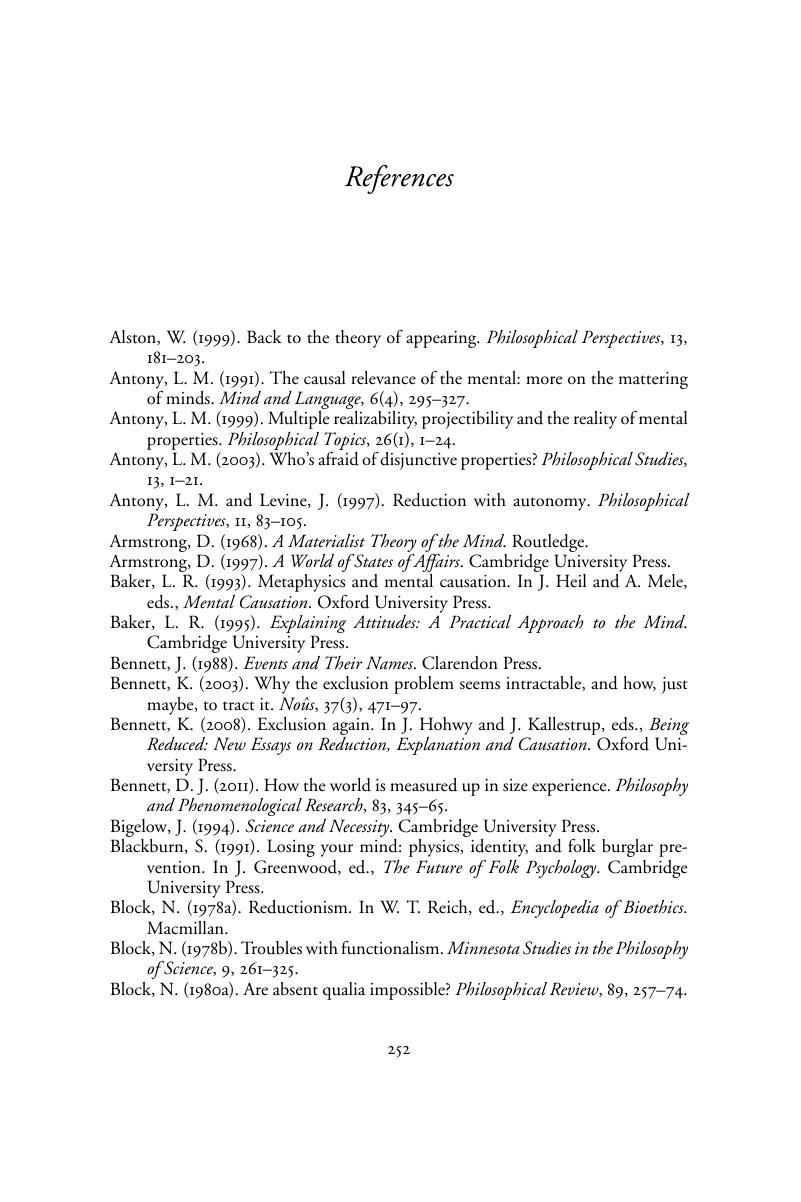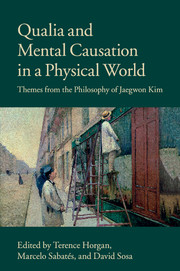Book contents
- Half title page
- Title page
- Copyright page
- Contents
- Contributors
- Preface
- Chapter 1 Reality and reduction
- Chapter 2 Two property theories and the causal conundrum for physicalism
- Chapter 3 Mentalcausation
- Chapter 4 Doesmental causation require psychophysical identities?
- Chapter 5 The Canberra Plan neglects ground
- Chapter 6 Microrealization and the mental
- Chapter 7 Supervenienceand the causal explanation of behavior
- Chapter 8 Visual awarenessand visual qualia
- Chapter 9 Phenomenal externalism, Lolita, and the planet Xenon
- Chapter 10 Troubles for radicaltransparency
- Chapter 11 How theories work
- Bibliography
- Index
- References
Bibliography
Published online by Cambridge University Press: 05 April 2015
- Half title page
- Title page
- Copyright page
- Contents
- Contributors
- Preface
- Chapter 1 Reality and reduction
- Chapter 2 Two property theories and the causal conundrum for physicalism
- Chapter 3 Mentalcausation
- Chapter 4 Doesmental causation require psychophysical identities?
- Chapter 5 The Canberra Plan neglects ground
- Chapter 6 Microrealization and the mental
- Chapter 7 Supervenienceand the causal explanation of behavior
- Chapter 8 Visual awarenessand visual qualia
- Chapter 9 Phenomenal externalism, Lolita, and the planet Xenon
- Chapter 10 Troubles for radicaltransparency
- Chapter 11 How theories work
- Bibliography
- Index
- References
Summary

- Type
- Chapter
- Information
- Qualia and Mental Causation in a Physical WorldThemes from the Philosophy of Jaegwon Kim, pp. 252 - 261Publisher: Cambridge University PressPrint publication year: 2015



